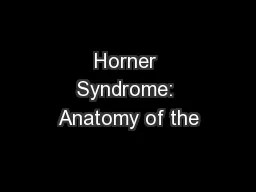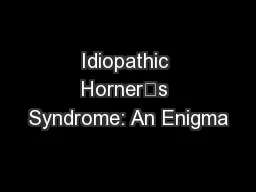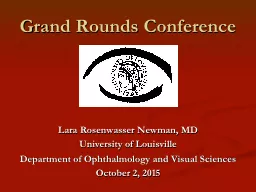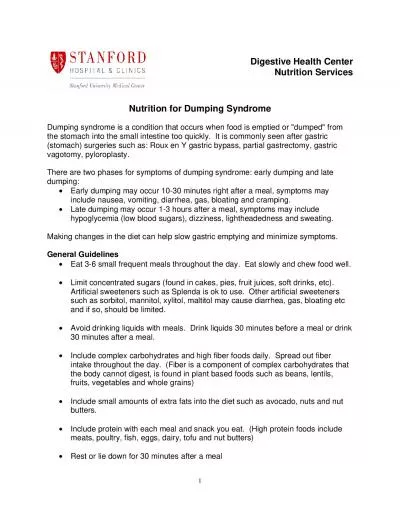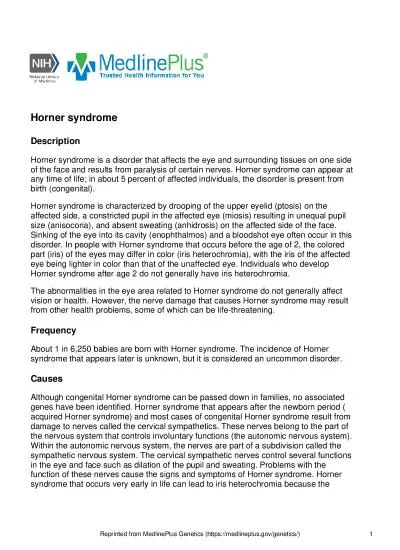PPT-Horner Syndrome: Anatomy of the
Author : yoshiko-marsland | Published Date : 2018-01-18
Oculosympathetic Pathway with Case Review eEdE 149 ASNR 2016 Jeffrey Sachs MD Michael Zapadka DO Timothy Martin MD Christopher Lack MD PhD Disclosures The authors
Presentation Embed Code
Download Presentation
Download Presentation The PPT/PDF document "Horner Syndrome: Anatomy of the" is the property of its rightful owner. Permission is granted to download and print the materials on this website for personal, non-commercial use only, and to display it on your personal computer provided you do not modify the materials and that you retain all copyright notices contained in the materials. By downloading content from our website, you accept the terms of this agreement.
Horner Syndrome: Anatomy of the: Transcript
Download Rules Of Document
"Horner Syndrome: Anatomy of the"The content belongs to its owner. You may download and print it for personal use, without modification, and keep all copyright notices. By downloading, you agree to these terms.
Related Documents

